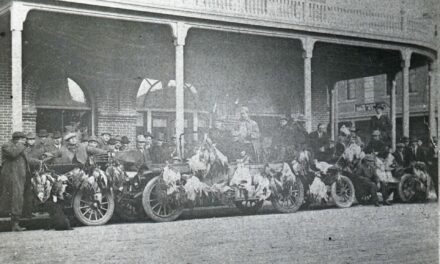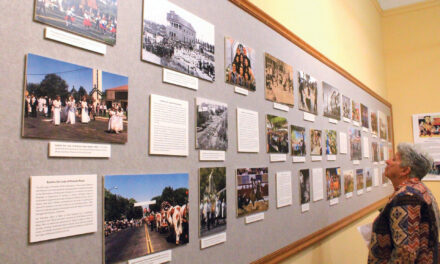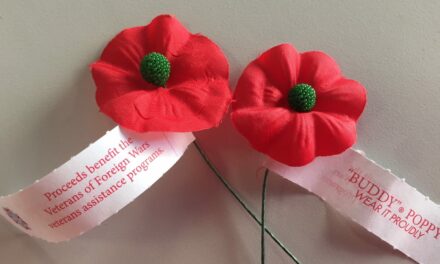The official dirt when it comes to California?
It’s San Joaquin Soil.
Some have called it green gold given it is among the key ingredients that allows the San Joaquin Valley to grow 12 percent of the nation’s food and is the underpinning — literally — of California’s $51.7 billion agricultural production that smokes the No. 2 farm state of Iowa at $34.7 billion.
You might not be surprised to read that San Joaquin Soil is found in the San Joaquin Valley including San Joaquin, Stanislaus, and Merced counties. It made its way here thanks to the forces of nature wearing down the Sierra.
What might surprise you is this: San Joaquin Soil is the official dirt of California.
And you thought it was wayward politicians in Sacramento.
Actually, its Sacramento politicians that decided to elevate the soil’s status as California’s official dirt in 1997 after a group of 8th graders from the San Joaquin Valley proposed it be so honored.
It is one of nearly 50 official state symbols that managed to gain majority support for adoption in the California legislature over the years.
The official rock, by the way, is serpentine.
Found throughout the state, the shiny, green and blue rock gained official status as California’s rock in 1965. Serpentine contains the state’s principal deposits of chromite, magnesite, and cinnabar
Here’s perhaps another useless fact. California — the first state to require catalytic convertors and reformulated gas — is also the first state to have an official rock.
You might wonder why Alcatraz wasn’t selected as the official rock or even El Capitan overlooking Yosemite Valley which is the world’s eighth largest monolith rock. After all, they certainly have a much higher profile than serpentine.
The reason is simple. California has a greater number of minerals and a wider variety of rock types than does any other state.
Colorado may have the Rocky Mountains but we have the rocks.
It should be noted lawmakers are apparently fascinated with rocks and soil.
We have an official mineral which, of course, is gold.
California also has an official gemstone — benitoite. Known by some as the “blue diamond” it was first found hear the headwaters of the San Benito River hence its name.
Speaking of blue diamonds, California has official nuts.
No, they are not elected officials. They are almonds, walnuts, pistachios, and pecans.
It’s no surprise almond has been given official homage since eight out of every 10 almonds eaten in the world comes from California.
But here’s a little surprise for you. Roughly 74 percent of the world supply — and 99 percent of the United States’ crop — of commercial grown walnuts come from California.
Almost 100 percent of the nation’s supply of pistachios are grown here as well.
Pecans constitute a small part of the production but when they were deciding the question of California’s official nuts they figured it would be only a matter of time that pecans thrive in large numbers here as well.
California also has an official dance.
No, its not break dancing. It’s square dancing.
Square dancing got its big break as an official dance because Californians — will at least some — have been doing the dosey doe since the Gold Rush.
California also has official grass.
No, it’s not marijuana grown in the Emerald Triangle of Humboldt, Trinity and Mendocino counties.
It’s purple needlegrass.
The medium-large, long-lived bunchgrass thrives in clay soils. It is the most widespread native bunchgrass in the state. It can be found from the Oregon border into northern Baja California.
Once established, Purple needlegrass is tolerant of summer drought and heat. It can live more than 150 years and has been used in projects such as habitat restoration, erosion, and levee control.
Contrary to Elon Musk’s massive ego, Twitter not the state’s official bird. It’s the California quail.

Keep your eyes peeled and you can find California quail throughout the Northern San Joaquin Valley as well as elsewhere in the state.
To be honest, you’d think the top bird would be the California condor. It is not only one the rarest birds in the world but it has an impressive 9½-foot wingspan making it the largest birds in that category for North America.
For the official animal, the state went with the California grizzly bear
At one time there was thought to be 11,000 of them in California but we managed to kill them off 75 years after the Gold Rush with the last one being killed in Tulare County in 1922.
The California grizzly dominates the state flag.
The colors selected for the flag were red for courage and white for purity.
Those colors, even though they are in the state flag, aren’t California’s official colors.
The official color combination first popped up in 1875 as school colors for the University of California, Berkeley. Blue was picked for the sky and gold for obvious reasons.
There is an official tree — the California redwood.
Well, technically it is more like two trees.
There are two genera of California redwoods.
One is the coastal redwood whose given name is Sequoia sempervirens. They are the tallest trees in the world with the tallest being 379 feet. They are found along the Northern California coast
The other is the giant sequoia or Sequoiadendron giganteum that are found in the Sierra.
The largest is the General Sherman Tree in Sequoia and Kings Canyon National Park. It is over 274 feet high and more than 102 feet in circumference at its base. It is widely considered to be the world’s largest tree in overall volume.
Although you could make the pitch for hiking or — if the 49ers win another Super Bowl — football, but the official sport of California as adopted in 2018 is surfing.

It’s largely identified as a Southern California thing but the rad waves are off Half Moon Bay that is the stage for the world famous Mavericks competition.
The golden trout is native only to California and was named the official state fish by act of the State Legislature in 1947.
Originally the species was found only in a few streams in the icy headwaters of the Kern River, south of Mount Whitney, the highest peak in the United States outside of Alaska. Stocking of wild and hatchery-reared fish has extended its range to many waters at high elevation in the Sierra Nevada from El Dorado and Alpine Counties southward. It has also been planted in other states.
My favorite “official” thing is the state flower — the California Golden Poppy.
You can find them in the valley, in the foothills, along the ocean and even up in the higher elevations.
If you haven’t noticed by now, if something can be called “gold” it has an inside track to become an official state symbol.
“I have found it” or more importantly the Greek word for that phrase — “Eureka” — is the official state motto.
It is believed to be tied into discovery of gold in California.
The backstory is that Archimedes, the famed Greek mathematician, is said to have exclaimed “Eureka!” when, after long study, he discovered a method of determining the purity of gold.
You can find Eureka today in the heart of the Emerald Triangle which is considered the largest put growing region in the country.
As a side note, there was an unsuccessful bid to make the state motto “In God We Trust” in 1957. Six years later, “Eureka” that has graced the official state seal since 1849 was make the official state motto.
It might seem like a bit of a stretch, but California has an official fabric.
It’s denim.
Yes, it’s another Gold Rush connection.
Denim gained a prominent place in history when San Francisco dry goods wholesaler Levi Strauss agreed to apply for a patent together with Nevada tailor Jacob Davis, who had developed a method of reinforcing the pockets of work pants with copper rivets.
And what better way to end a story about official things than the official state song.
No, it’s not “California, Here I Come.”
It’s “I Love You, California,” written by F.B. Silverwood, a Los Angeles merchant.
It was the official song of expositions held in San Francisco and San Diego in 1915, and was played aboard the first ship to go through the Panama Canal.
In 1951, the State Legislature passed a resolution designating it as California’s state song. During the years following, several attempts were made to make other songs such as “California, Here I Come” the official state song. Finally, in 1988, “I Love You, California” became the official state song by law.



